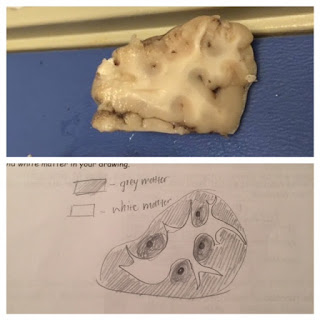The first test was a photopupillary Reflex.
Claim: the pupil that was covered during the "dark" period, expands and shifts to adjust to the new light.
E: My partner did this one twice and both times we did not note any difference besides twitching.
R: This could be due to the amount of time put in the "dark" period covering one eye, next time we would cover it longer.
Knee Jerk Reflex(Patellar Reflex)
C: after doing squats the reflex does not work.
E: The muscles are fatigued and do not slide across each other as easily.
R: Although it did work, my leg still kicked out pretty far meaning that I was not as fatigued because my muscles slides past each other
Blink Reflex
C: Our eyes blink even if we know that an object won't hit us.
E: Blinking protects our eyes which are very sensitive. Humans blink on average 14,400 times each day.
R: I blinked without question haha, I may have even flinched
Babe what's your sign?
C: When dragging a pen across the bottom on ones foot, he or she should flex her toes and move closer together.
E: Our feet move in response to the nerves, If one did not experience the flexing, then they may have nerve damage.
R: My partner's feet moved and responded fine proving that she still has the nerves in her feet. Her toes went straight up and flexed.
How Fast are You?
C: texting will make our reaction times slower and therefore more dangerous to text and drive.
E: Our brains cannot physically multi-task, but rather switch between task quickly. The more tasks we take, the longer the brain takes to switch.
R: From collected class data both guys and girls had slower reaction times to the ruler drop which proves that texting and driving is infact very dangerous. My time dropped from a .35 reaction to .58 almost a fourth of a second.
Ruler reaction time without texting







